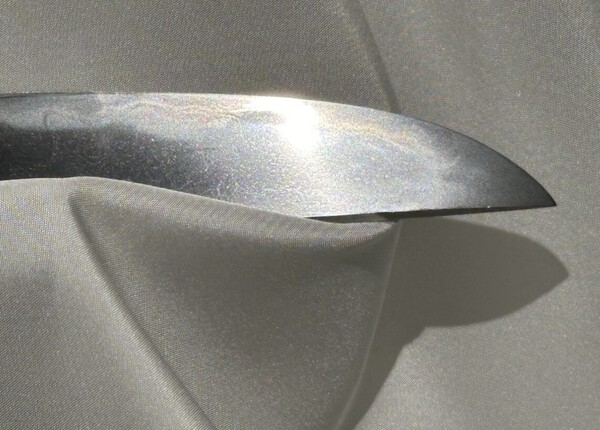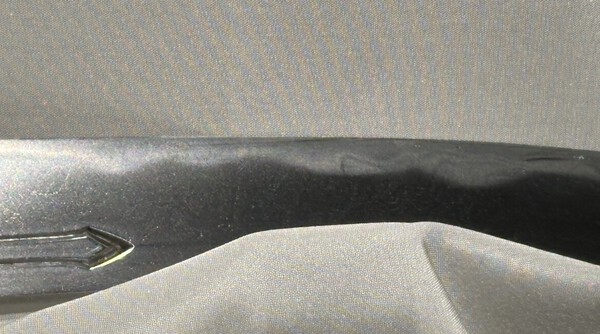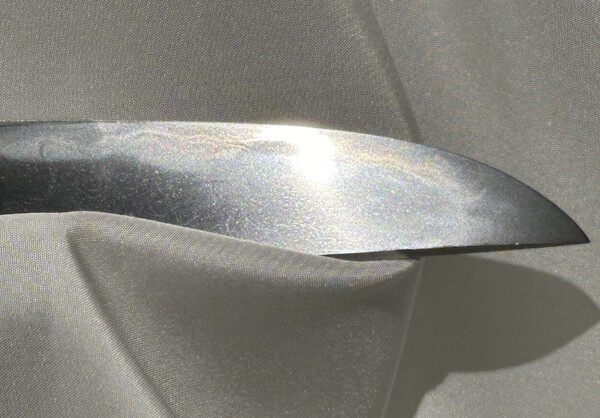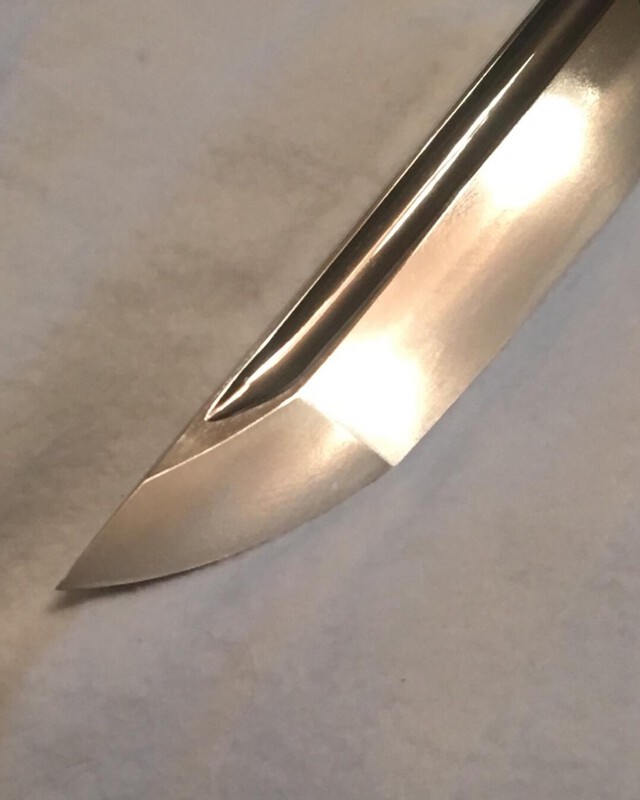-
Posts
1,921 -
Joined
-
Last visited
-
Days Won
22
Content Type
Profiles
Forums
Events
Store
Downloads
Gallery
Everything posted by Gakusee
-
Luc will know well and great you have talked to him.
-
Well, yes, it clearly says Nobuie. But please do some background reading as the vast majority of these helmets are signed that way in homage to THE Nobuie. In other words, you should almost treat that type of signature as though you encountered a sword signed Bishu Osafune Sukesada (ie, general school work, even if it is of high quality). There are only a handful of helmets authenticated to the actual Nobuie. Nevertheless, this looks like a very nice helmet, so congrats on the acquisition.
-

Sorry To Report
Gakusee replied to Grey Doffin's topic in Sword Shows, Events, Community News and Legislation Issues
May he rest in peace -
Yes, absolutely, Peeti and thank you for that clarification. You are right. It kind of reminds me of the other such case, where a tanto moved between Yukimitsu and Masamune back and forth and now it is Masamune at TJ. The reality is both these tanto are outstanding but also demonstrate that when a blade is a top-level Soshu, sometimes attribution is difficult even for the topmost experts. I don’t think anyone will dispute that both are exceptionally great blades.
-

Going to Japan... with swords...
Gakusee replied to Rivkin's topic in General Nihonto Related Discussion
Narita is more experienced (faster) than Haneda. At Haneda, sometimes mishaps or misunderstandings might happen, although infrequently. I never told anyone anything in advance and turned up at the airport but was always prepared as per the below. So far I had: - all my sword related paperwork (NBTHK certificates, why I own them - eg life NBTHK membership, ToKen UK membership, NKBKHK membership etc - clearly “certifying” me as an obvious nihonto nerd) plus - who in Japan will assist with the torokusho shinsa. - examples of the form that I need (from previous such visits) from the police/ customs - sometimes a letter to customs from the friend/ dealer who will deal with the torokusho process on my behalf - documented (or at least verbal) reason why the blade is being brought (eg polish, Juyo Shinsa etc) They like to know who will take care of the licensing and registration process there, so having the contact details (and correspondence or letter from) of some dealer or reputable intermediary / friend who is the Nihonto circles (we are lucky to have 3-4 Brits in there, but also people like Bob Hughes, possibly Gordon, Paul Kremers, etc) will be paramount. On the way into Japan: only three blades are permitted. Unlimited on the way out. Make sure to declare the blades import on BOTH slips of paper you have to fill out (or on the electronic registration forms). Both of these are at the back towards the bottom of the form. -
Colin Thanks. I am happy to have a call with you and discuss the state of the market in more detail.It is becoming too time-consuming to discuss here. There are substantial regional dichotomies as well as level-related disparities. But the overall trends are consistent. Better still, may I recommend that you could eventually come to one of our UK meetings in person (as you know, we have been meeting all over the UK for the last few years, with regional sessions in Birmingham, Scotland, London and even other parts of the country plus various large- and small-museum visits and also even dedicated samurai-themed auction house visits) and talk to a handful of people who are doing it (semi) professionally or me. Also, I tend to go to Japan 3-4 times a year and every visit contains a Nihonto element (study, appreciation, discussion about the market and dynamics, rather infrequently - the occasional purchase, etc). Best wishes.
-
From memory, that tanto was Norishige at Juyo but on passing TJ they upgraded it to Masamune. If you read the setsumei, they expend a whole three sentences (proportionately for a setsumei that is a very substantial fraction of the text) explaining why they have changed their minds away from Norishige. I have only seen it behind glass but it is an amazing blade. Simply beautiful. The Aoi blade…. Well I think it is more likely a Tametsugu or a very very rough Norishige, but as Rohan explains above, there must have been some politics involved to upgrade it historically to a Masamune. It just does not look right for a Masamune in either nioguchi or jigane or hataraki. However, I shall leave it to others to explain why the workmanship is not fully aligned to the Masamune paradigm, hence the “den”. It has been a long day at work for me… In my view it is problematic that the NBTHK do not issue papers with attributions “Soshu ju no Saku (Kamakura)” or “Soshu ju no Saku (mid Nambokucho)” etc at H/TH level. So as they don’t do that, hence the den Masamune, which is a bold call on this one.
-
Yes, Colin auction houses are one element of the market. I agree with you. We can’t ignore that element. All I am saying is that element has diminished so substantially in the last two decades that its importance in a multi-factorial model of evaluation of prices, desirability, relevance, importance, trends/ trajectories etc that it is not that informative (as the main driver of our observations and conclusions) anymore. The real prices (outside of the punitive 40-50% spread of value due to buyer/seller fees and taxes) at which items can and should clear are marred by that aforesaid spread. I am not sure why you claim the discussion is only around top blades. The auction house analysis or secrecy aspects stay the same regardless. However, in relation to appreciation:stagnation of value, then that is very pertinent and I agree with that comment. Perhaps that is so because indeed the top end of the market (excellent or rare Juyo and above) has really appreciated, while Hozon has stagnated and TH is very tricky as one needs to be knowledgeable enough to figure out whether TH is simply not Juyo yet or it is a failed Juyo (thus, merely a slightly superior H). Unfortunately, in nihonto pricing, the ladder theory of gradation (H->TH->J etc) is a very strong determinant of prices. Jussi’s valuable data amply demonstrate that by having examples which were low priced when H/TH and then substantially appreciated when they became J/TJ. p.s. I was (not sure if seriously or jokingly but there is always a scintilla of truth even in facetiousness) asked to be an auction consultant and refused. Again, we need to move beyond what was relevant and valid twenty years ago and live in the modern world.
-
Colin, You overlook several pertinent facts: - The business has moved on tremendously in the last 20 years. Previously, auction houses were the only way to access top blades etc, while now they are not. Also, their presentation of auction items, in-house knowledge and overall expertise are woefully behind the standard benchmark (of even the modest dealers working and presenting on this forum) let alone the topmost leaders in the space internationally (no slight intended to our members here, just reality); - So, since the auction houses lag so pitiably behind, they can no longer be representative of “the market”. The market is where most action happens and that is in Japan. That is not accessible to the vast majority of NMB members and that is privileged info. Of course you could endeavour to parse the “market” into segments such as the US market, the U.K. market etc but again that is a false methodology as all of these jurisdictions now primarily source from Japan nowadays (with the ever diminishing trickle of discoveries in the US); - The “unsold” auction houses proportions cited above are misleading. There are post-auction private sales which still realise prices and margins on the auction remnants for the auction houses. In fact, the Davidson collection left-over items were placed that way and so were other “unsold” items in other auctions. The auction house fulfilled its purpose to indicate roughly where the seller’s mind was (taking into account reserve pricing axioms). - While Hoshi and others do discuss top items, please do not get distracted by that. The facts above in relation to auction houses are relevant to all levels of items. On the perennial point of secrecy: - It is embedded in the Japanese national psyche. Ever since Nobunaga and Toyotomi confiscated swords nationwide and demanded their vassals present them with “worthy” blades (ie the best blades in the daimyo’s ownership). Therefore families hid, defaced, concealed their swords - Furthermore, there was ignominious embarrassment associated with the impoverishment of daimyo families in Meiji/Taisho and the concomitant dispersal of family heirlooms. Therefore, family histories were deliberately obfuscated, eradicated or concealed. - Next, there is always fierce competition for great blades. That is necessitated by the limited number of such in existence at every level (Hozon- Kokuho). Therefore, as we now all know more, have access to more info and all hope for better items in our collections, guess what - we are all competing with each other for the very few items which still circulate around and have not been acquired by Brastsheave, Nagoya Token World, Mori foundation, the collectors first / foremost in Japan or the few top Japanese dealer-collectors (who own outstanding items). It is always easier for the Japanese dealers to sell in Japan even though sometimes the higher Western market friction is justified by the higher prices which could be realised in the West due to the lower variety and choice. The idealistic approach of some of our younger and newer NMB members, perhaps inspired by their other respective fields of study of collecting outside of Nihonto or even the utopian (ubiquitous, indelible and immutable information availability) promise of blockchain technology, is unfortunately not commutable to nihonto esoterica. One needs to be realistic about the cultural, historic, psychological (self-interest etc) aspects of this hobby.
-
Well, I had to downsize them and recut them but as there is so much excitement around that blade, I am sharing my images of that Masamune. The video I have is too big for here.
-
Beautiful contributions by some friends above, who I know are fairly knowledgeable and I can attest they have handled numerous Go (as some of that was a joint opportunity). Elusive as Go is, they do come up occasionally in Japan and if one has the admittedly rare opportunity, they should study them. The nice organic hamon and clarity combined with the uruioi micronie in the jigane is beautiful. Apologies for the bad pictures below but this is what I currently have on my mobile below. I merely want to demonstrate with some photos the “connectivity” to Norishige (note that jihada in some of the Juyo Go photos below) and the lustre. That Go is not one of the most flamboyant but still educational. As Tsuki says, not as prominent chikei or very ostentatious kinsuji but they are still there.
-
It is here somewhere.
-
That is a good line-up. You need to brace yourself. As has been explained here several times, Juyo Shinsa has lately become more stringent, difficult and unpredictable in the last few years. So one needs to be twice as self-critical and analytical than before.
-
Yes, but a lot of people delude themselves that they have a top piece. In fact the majority. It requires a lot of knowledge (absolute and comparative), honesty, sobriety and self-criticism to admit that one might be wrong and deluded oneself that the piece is a top one. So, while one might think theirs is the best or among the best, a few attempts at shinsa (in my view one is not enough) could actually prove or disprove that. A top piece eventually gets promoted, even if not at first attempt. Also resubmitting at the same level has a few complications and hurdles one needs to overcome…..
-
Because not all Tadayoshi are equal….
-
I think we are referring to the same concept but articulated differently. I shall ascribe it to my petty fixation with your statement about TH and dating to 1998, while I wished to point out the certificate could have been from last year and even at TJ level. So, no need for a lower level paper or longer passage of time for degradation to have occurred. Therefore, in summary, we are referring to the same caveat emptor.
-
Very well articulated. A couple of brief thoughts on the actual blade. Admittedly I can see very little of the actual hamon and habuchi (might be just my eyesight) but it has tight enough itame/ko-itame jihada to be a fairly good sword. For Awataguchi, again caveated on the limitations above, you need a somewhat different hamon to what little I can see in the one small photo - one with some more konie based activity (eg some small ashi or other niesuji, slightly deeper and richer nioiguchi). Also, look at the boshi (Eg omaru? komaru? yakitsume or not, etc) and finally the activities immediately above the hamon. Awataguchi is a tall order of quality attribution… Having said that, your question was which one to submit. Probably the Enju will have higher chances all else being equal, relatively speaking, and not in absolute terms of certainty.
-
So overall one needs to tread carefully with the conclusions.
-
Yes that is correct. But for H/TH if in doubt, re authenticity of certificate / blade, I suggest you call them and email/fax certificate and oshigata and photo if you have and they could advise if they believe something is out of order. But is not straightforward and best done via proxy / Japanese speaker.
-
That is a bit of a red herring. Someone could have got a TJ certificate for a balde only two years ago and let the blade rust or have damaged it. I followed one TJ blade which went somewhere in a pristine condition and 12 months later it needed a repair …. It all boils down to how a sword is cared for. I have a Juyo sword which was last graded and polished 60 years ago and it is still almost perfectly preserved (save for some uchiko hike by an overzealous custodian in Japan).
-
same = can be checked by telephoning or calling or going in person
-
Well, as you have probably deduced, the shumei also looks somewhat like Kanemoto. This is valuable due to being ubu and the great, documented provenance. It looks healthy and in polish it might be a very good sword.
-
Well that is not surprising re Berlin as Peter is first and foremost an armour collector, who later on diversified into swords and tosogu. He has a great collection and the digital displays for the Rai blades for instance (with the 5?6?m magnification of the blades) are exceptional. One can almost study the micro granules of the metal matrix even…
















